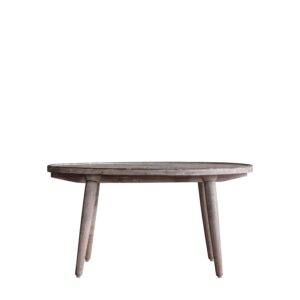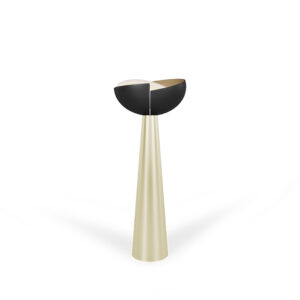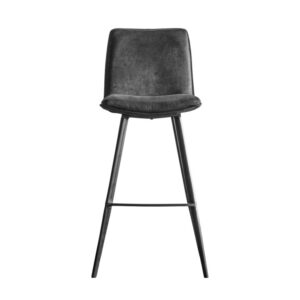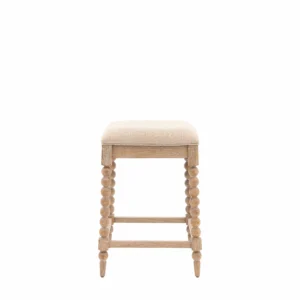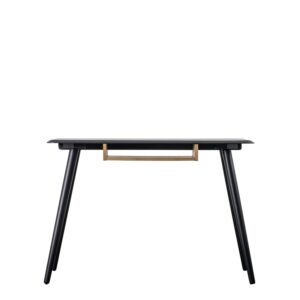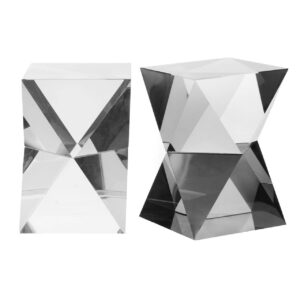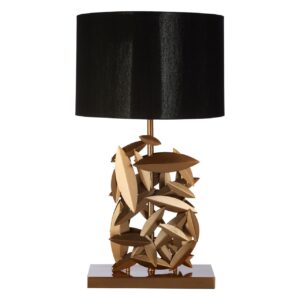Inspiration
THE TIMELESS APPEAL OF MINIMALISTIC INTERIOR DESIGN IN LIVING SPACES
Unveil Luxury, Unleash Comfort – Eclectic Niche.
Minimalistic interior design has captivated the hearts and homes of many. Rooted in the principles of simplicity, functionality, and deliberate restraint, minimalism offers a sanctuary of calm amidst the chaos of modern living.
This article aims to unravel the essence of minimalistic interior design, delving into its core principles, practical applications, and transformative benefits. From the serene elegance of a clutter-free living room to the tranquil oasis of a minimalist bedroom, we explore how minimalism transcends mere aesthetics to become a way of life.
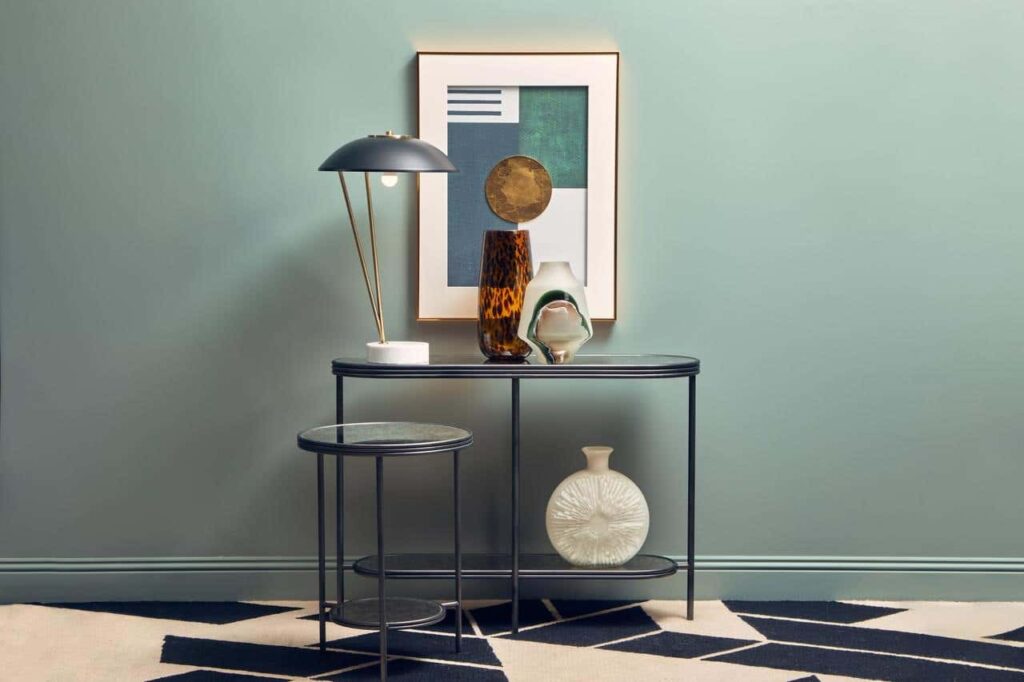
Understanding Minimalism
The concept of minimalism revolves around the idea of “less is more.” It emphasizes simplicity, clarity, and the elimination of excess in all aspects of life. At its core, minimalism encourages individuals to focus on what truly matters by decluttering both their physical and mental spaces.
In terms of design, minimalism advocates for clean lines, uncluttered spaces, and a restrained color palette. It prioritizes functionality over ornamentation, with every element serving a purpose. Minimalist interiors often feature sparse furnishings, open layouts, and a harmonious balance of form and function. The goal of minimalism in design is to create environments that are visually striking, harmonious, and conducive to a sense of calm and clarity.
Beyond design, minimalism extends to lifestyle choices, urging individuals to simplify their lives by prioritizing experiences over possessions and cultivating mindfulness in their daily routines. This might involve decluttering belongings, practicing mindful consumption, and fostering meaningful connections with others.
Ultimately, the concept of minimalism is about finding freedom and fulfillment through intentional living. By paring down to the essentials and letting go of excess, individuals can create space for what truly brings them joy, purpose, and fulfillment.
History of Minimalistic Interior
The roots of minimalism can be traced back to the early 20th century, amidst the dynamic interplay of industrialization and burgeoning artistic innovation, where a subtle yet profound shift was underway. It began with artists like Piet Mondrian and Gerrit Rietveld, who sought to distill art to its essence, embracing geometric forms and primary colors in movements like De Stijl and Bauhaus.
As the 1960s dawned, a new wave of artistic expression emerged in the United States. In the galleries of New York City, artists such as Donald Judd, Carl Andre, and Dan Flavin challenged the status quo with their minimalist works. Sculptures of industrial materials, repetitive geometric shapes, and immersive installations captivated audiences, provoking contemplation on the nature of form, space, and perception.
Meanwhile, in the realm of architecture, visionaries like Ludwig Mies van der Rohe and Le Corbusier were pioneering a similar ethos of simplicity and functionality. The International Style, characterized by clean lines, open spaces, and the use of industrial materials like steel and glass, became synonymous with minimalist architectural design.
As the decades unfolded, minimalism transcended the confines of the art world to permeate various aspects of design. Designers like Dieter Rams, influenced by the Bauhaus tradition, championed minimalist principles in product design, advocating for simplicity, clarity, and a focus on the essential.
In the contemporary landscape, minimalism continues to resonate as a powerful aesthetic and lifestyle movement. Beyond mere design, it has become a philosophy—a way of life for many seeking refuge from the noise and clutter of modern existence. From sleek interiors to streamlined gadgets, minimalism offers a sanctuary of simplicity amidst the chaos of the digital age.
Principles of Minimalism
The principles of minimalism encompass a set of guiding concepts that inform the design philosophy and lifestyle choices associated with minimalist practices. Here’s a detailed explanation of each principle:
- Simplicity: At the heart of minimalism lies the principle of simplicity. This entails stripping away the unnecessary and focusing only on what is essential. In design, simplicity is achieved through clean lines, uncluttered spaces, and a restrained color palette. In lifestyle, simplicity involves decluttering possessions, commitments, and obligations, prioritizing quality over quantity, and embracing a more intentional way of living.
- Functionality: Functionality is another key principle of minimalism, emphasizing the practicality and utility of objects and spaces. In design, functional elements serve a purpose and are devoid of unnecessary ornamentation. Furniture, for example, is selected based on its usability and efficiency rather than its decorative value. Similarly, in lifestyle, functional choices prioritize activities and possessions that serve a clear purpose or bring value to one’s life.
- Clean Lines and Clutter-Free Spaces: Minimalism promotes clean lines and clutter-free spaces to create environments that are visually calming and aesthetically pleasing. In design, clean lines are achieved through geometric shapes, straight edges, and minimal ornamentation. Clutter-free spaces are characterized by uncluttered surfaces and thoughtful organization, with every item having its place. Similarly, in lifestyle, minimizing physical and mental clutter fosters a sense of clarity and tranquility.
Emphasis on Quality: Minimalism advocates for quality over quantity in both design and lifestyle choices. In design, this means investing in well-made, durable furnishings and accessories that stand the test of time. In lifestyle, it involves prioritizing experiences, relationships, and possessions that add value and bring joy, rather than accumulating material possessions for the sake of it.
Mindful Consumption: Mindful consumption is a core principle of minimalism that encourages conscious decision-making about what we bring into our lives. In design, this involves thoughtful consideration of each item’s necessity and impact on the overall aesthetic. In lifestyle, it means being intentional about purchases, considering the environmental and ethical implications of our consumption habits, and avoiding unnecessary waste. - Appreciation of Space: Minimalism embraces the importance of negative space, also known as “white space” or “empty space,” in design. Negative space allows for breathing room within a space, highlighting the essential elements and creating a sense of balance and harmony. Similarly, in lifestyle, minimalism values the importance of mental space—time for reflection, creativity, and self-care—and seeks to create a sense of spaciousness in both physical and mental realms.
By adhering to these principles of minimalism—simplicity, functionality, clean lines and clutter-free spaces, emphasis on quality, mindful consumption, and appreciation of space—you can create environments and lifestyles that are not only aesthetically pleasing but also conducive to a sense of calm, clarity, and well-being.
Core Elements of Minimalistic Design
Minimalist design is characterized by a thoughtful selection of elements, with each contributing to the creation of serene and harmonious living spaces that are free from unnecessary distractions and clutter.
- Color Palette: In minimalist design, the color palette is deliberately kept simple and restrained, typically consisting of neutral hues such as white, gray, black, and beige. These neutral colors serve as a backdrop, allowing other design elements to stand out while imparting a sense of calm and tranquility to the space. Pops of color are sparingly introduced to add visual interest and personality, but they are carefully curated to maintain the overall sense of harmony. Accent colors can be incorporated through artwork, textiles, or small decorative objects, providing subtle touches of vibrancy without overwhelming the space.
- Clean Lines & Furniture: Clean lines are a defining characteristic of minimalist design, emphasizing simplicity and clarity in form. Furniture pieces feature straight edges and sleek profiles, eschewing ornate details or unnecessary embellishments. The focus is on functionality and practicality, with each piece of furniture serving a specific purpose. Multifunctional furniture is particularly favored in minimalist interiors, allowing for efficient use of space while minimizing visual clutter. Uncluttered surfaces are essential to maintain the minimalist aesthetic, encouraging a sense of openness and calm within the room.
- Storage & Organization: Effective storage and organization are crucial aspects of minimalist design, enabling the seamless integration of everyday items while maintaining a clean and clutter-free environment. Concealed storage solutions, such as built-in cabinets, closets, and under-bed storage, are employed to keep belongings out of sight and preserve the minimalist aesthetic. Decluttering is a fundamental practice in minimalist design, requiring regular assessment and editing of possessions to ensure that only the essentials remain. Streamlined organization systems, such as labeled containers and compartmentalized storage solutions, help to maintain order and coherence within the space.
- Natural Light & Materials: Natural light is celebrated in minimalist design for its ability to illuminate the space and accentuate its simplicity. Large windows, skylights, and glass doors are strategically incorporated to maximize daylight penetration and create a bright, airy atmosphere. Window treatments are kept minimal to allow sunlight to filter through unobstructed, enhancing the sense of openness and connection with the outdoors. In addition to natural light, minimalist interiors often feature natural materials such as wood, stone, and glass. These materials lend warmth, texture, and a sense of authenticity to the space, reinforcing the connection to nature and promoting a serene and inviting ambiance.
- Negative Space: Negative space, also known as “white space” or “empty space,” plays a crucial role in minimalist design. It refers to the areas of a room that are intentionally left unoccupied or deliberately left blank. Negative space serves to balance the visual composition, allowing the essential elements of the design to stand out and breathe. By embracing negative space, minimalist interiors achieve a sense of openness, tranquility, and visual clarity.
- Limited Decorative Objects: Minimalist design advocates for a selective approach to decorative objects, favoring quality over quantity. Rather than filling the space with an abundance of decorations, minimalist interiors feature a few carefully curated pieces that add visual interest and personality to the room. Decorative objects should be thoughtfully chosen to complement the overall design aesthetic and contribute to the sense of harmony and balance within the space.
- Geometric Shapes: Geometric shapes are frequently used in minimalist design to create visual interest and structure. From furniture pieces to architectural details, geometric shapes such as squares, rectangles, circles, and triangles are employed to establish a sense of order and rhythm within the space. These shapes contribute to the clean, modern aesthetic of minimalist interiors, adding a dynamic yet cohesive element to the overall design.
- Focus on Texture: While minimalist design often emphasizes simplicity and restraint, texture plays a crucial role in adding depth and visual intrigue to the space. Incorporating a variety of textures, such as smooth surfaces, natural fibers, and tactile materials, adds richness and warmth to minimalist interiors. From plush area rugs to tactile upholstery fabrics, texture enhances the sensory experience of the space and creates a welcoming, inviting atmosphere.

-

Hamilton Barnes
Almer Stool Furn (2pk)
£510 Select options This product has multiple variants. The options may be chosen on the product page -

Hamilton Barnes
Artisan Bar Stool
£310 Add to cart -

North West
Boho Cowhide Bar Stool
£234 Add to cart
Benefits of Minimalistic Interior Design
Minimalistic design offers not only aesthetic appeal but also practical benefits that can enhance quality of life and promote a sense of harmony and balance in both physical and mental realms. These benefits include:
- Minimalistic design eliminates distractions and clutter, allowing for enhanced clarity and focus in both physical spaces and mental processes.
- Minimalism promotes a simpler lifestyle by encouraging individuals to prioritize what truly matters and let go of unnecessary possessions and commitments.
- Minimalistic interiors often exude a timeless elegance and sophistication, characterized by clean lines, uncluttered spaces, and a sense of tranquility.
- By emphasizing functionality over ornamentation, minimalistic design maximizes the usability and efficiency of spaces, making them more practical and easy to navigate.
- Living in a clutter-free environment can have a calming effect on the mind, reducing feelings of stress and anxiety and promoting a sense of peace and well-being.
- Minimalistic spaces are typically easier to clean and maintain due to their streamlined nature, saving time and energy in day-to-day upkeep.
- Minimalism is a versatile design approach that can be adapted to various architectural styles and personal preferences, making it accessible to a wide range of individuals.
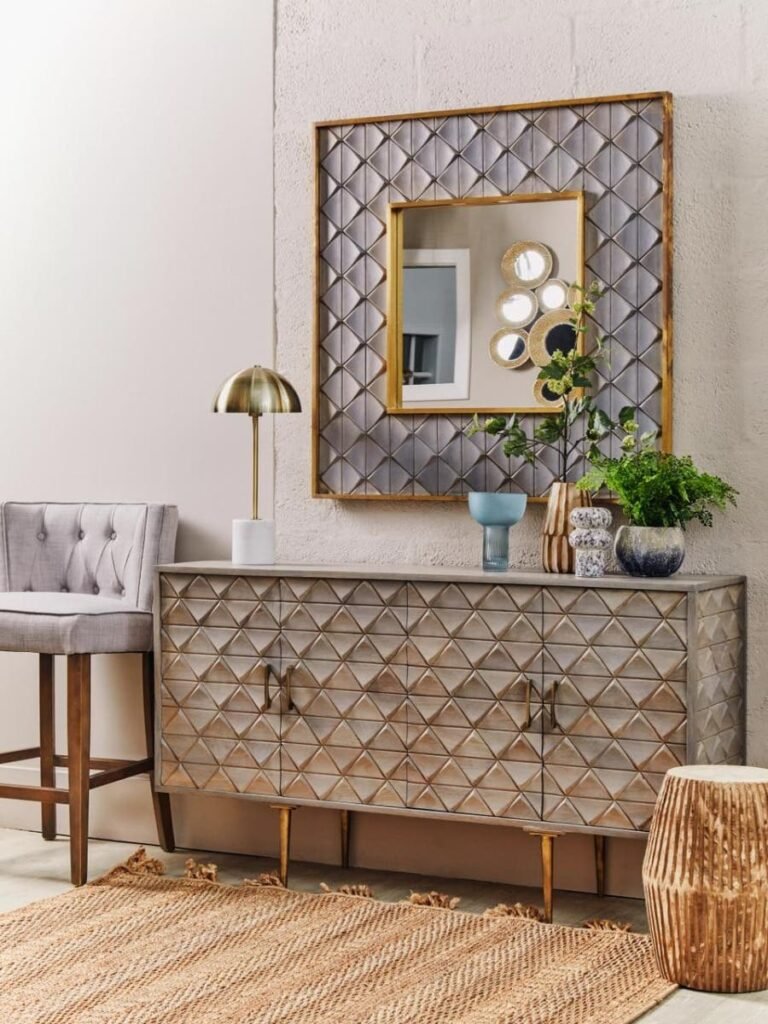
Applying Minimalistic Interior Design to Your Home
Different rooms of the home require unique approaches to incorporate minimalism effectively. By focusing on decluttering, simplifying design elements, and prioritizing functionality, you can create serene and harmonious spaces that embody the principles of minimalistic design. Let’s explore practical tips for applying minimalism to various rooms in your home.
Living Room:
– Start by decluttering the space and removing unnecessary items.
– Choose a neutral color palette for the walls, floors, and furniture to create a sense of cohesion.
– Select furniture with clean lines and simple designs, focusing on quality over quantity.
– Incorporate multifunctional pieces, such as a coffee table with storage or a sofa bed, to maximize space and functionality.
– Keep decorative elements to a minimum, opting for a few carefully curated pieces that add visual interest without overwhelming the space.
Bedroom:
– Clear surfaces and minimize visual clutter by storing items out of sight.
– Choose a platform bed or a simple bed frame with clean lines.
– Keep bedding simple with solid colors or subtle patterns.
– Use minimalistic lighting fixtures, such as pendant lights or wall sconces, to create a calming ambiance.
– Introduce natural elements like wood or plants to add warmth and texture to the space.
Kitchen:
– Declutter countertops by storing appliances and utensils in cabinets or drawers when not in use.
– Organize pantry items and kitchenware in labeled containers to maintain order.
– Choose sleek, minimalist cabinetry and hardware to create a streamlined look.
– Limit small appliances to the essentials and store them in designated areas.
– Keep the color palette simple and cohesive, using neutral tones or pops of color sparingly.
Bathroom:
– Clear countertops of unnecessary items and store toiletries in designated storage solutions.
– Choose a minimalist vanity with clean lines and ample storage space.
– Opt for a frameless glass shower enclosure to visually expand the space.
– Use simple, modern fixtures and hardware in a consistent finish throughout the room.
– Incorporate natural materials like stone or wood for a spa-like feel.
By applying these principles of minimalism to each room in your home, you can create a cohesive and harmonious living environment that promotes a sense of calm and tranquility.

Maintaining Your Minimalistic Design
Maintaining a minimalistic design requires a conscious effort to uphold the principles of simplicity, functionality, and clarity in your living space. While the initial process of decluttering and organizing may seem daunting, the real challenge lies in maintaining these principles over time. One of the key challenges in maintaining a minimalistic design is the temptation to clutter the space with unnecessary items. It’s important to resist this temptation and remain vigilant in your efforts to keep the space clean, uncluttered, and visually appealing.
To maintain your minimalistic design, it’s helpful to establish a few guiding principles:
1. Regular Decluttering: Make decluttering a regular part of your routine. Regularly assess your belongings and remove items that no longer serve a purpose or bring you joy. This will help prevent accumulation of unnecessary clutter.
2. Mindful Consumption: Practice mindful consumption by carefully considering new purchases before bringing them into your home. Ask yourself if the item is truly necessary and if it aligns with your minimalist lifestyle.
3. Storage Solutions: Utilize effective storage solutions to keep items organized and out of sight. Invest in furniture with built-in storage, such as ottomans with storage compartments or bed frames with drawers, to maximize space and minimize clutter.
4. Quality Over Quantity: Prioritize quality over quantity when it comes to furnishings and decorations. Choose a few high-quality, well-designed pieces that serve a purpose and enhance the overall aesthetic of your space.
5. Maintain Visual Balance: Pay attention to the visual balance of your space. Avoid overcrowding areas with too many items and ensure that there is enough negative space to allow the essential elements of your design to stand out.
6. Regular Cleaning: Stay on top of regular cleaning tasks to keep your space looking neat and organized. Wipe down surfaces, vacuum floors, and dust furniture regularly to maintain a clean and inviting environment.
7. Mindfulness and Intentionality: Above all, maintain a mindset of mindfulness and intentionality in your approach to your living space. Be conscious of the items you bring into your home and the impact they have on your space and well-being.
In conclusion, minimalistic interior design offers a timeless aesthetic that promotes simplicity, functionality, and tranquility in the home. By embracing clean lines, uncluttered spaces, and a restrained color palette, minimalist design creates a sense of calm and clarity that can have a profound impact on our well-being. While maintaining a minimalistic design requires diligence and mindfulness, the benefits—such as reduced stress, enhanced focus, and a more harmonious living environment—are well worth the effort. By incorporating the principles of minimalism into our homes, we can create spaces that not only look beautiful but also feel inviting and uplifting.

